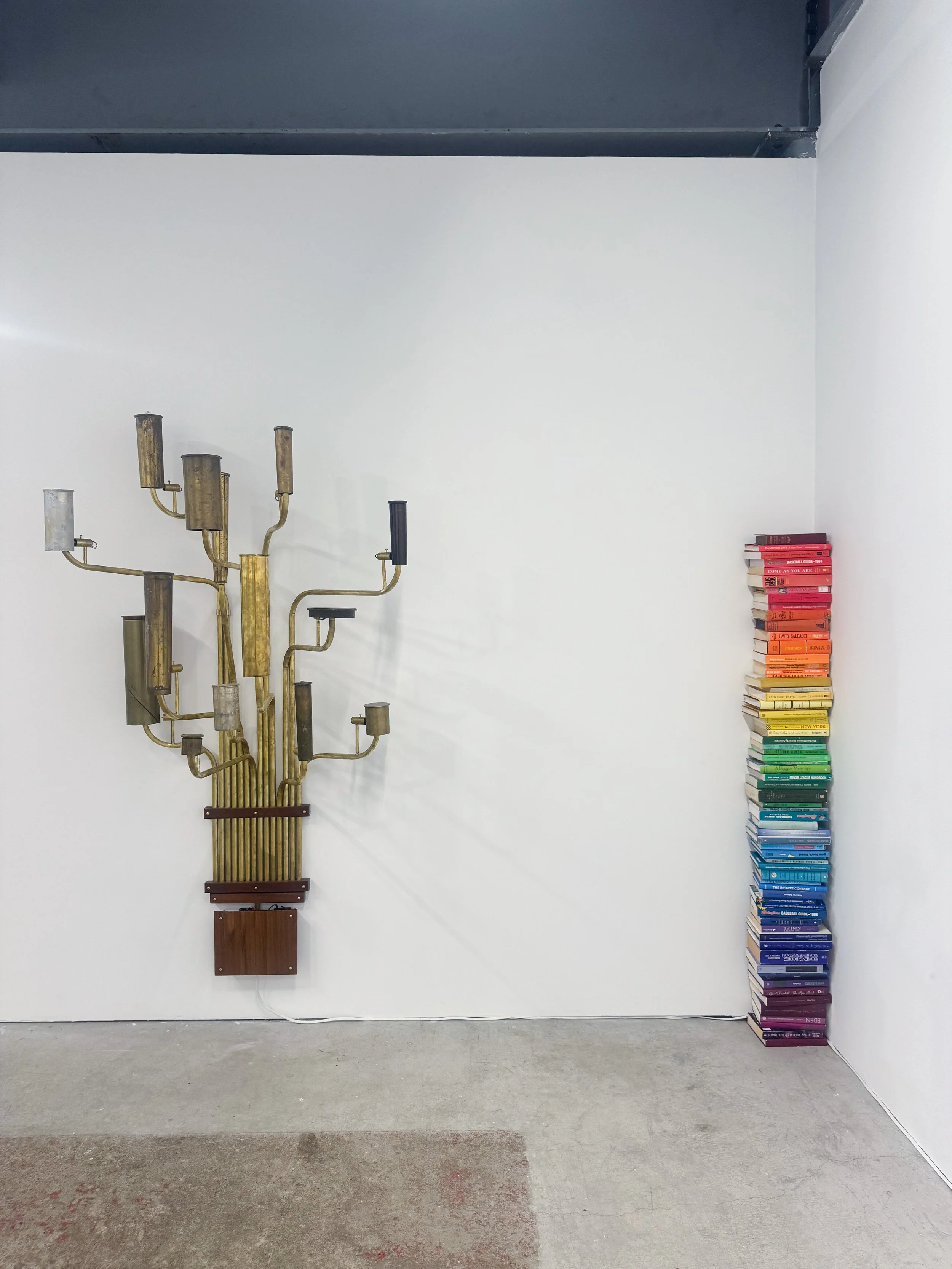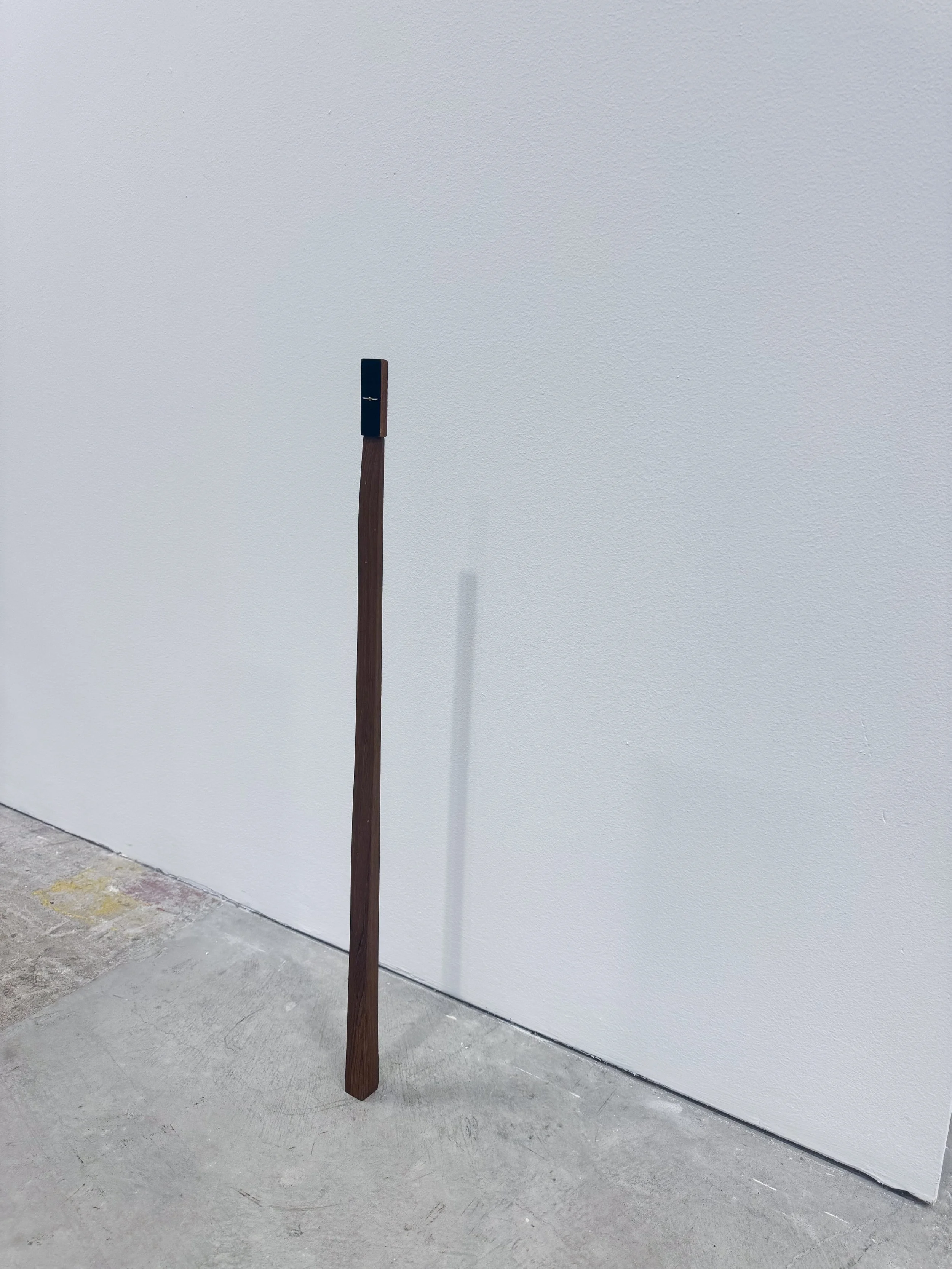The Sound of Time Passing
In the downstairs Anglim Trimble space at Minnesota Street Project, a thin but prevalent slice of art history can be seen. The group exhibition In the Manner of Paul Kos, curated by Kal Spelletich, presents as a sort of ode to the perennial San Francisco figure. Fabled for his incorporation of sound and video into sculptural installations, the evocation of ephemerality through the use of everyday material, and balance of concept, precision and whimsy; Kos’ impact on the development of conceptual art, the Bay Area arts landscape and multi-disciplinary practice reverberate throughout the exhibition. To this end, the exhibition is as much about the history of art in San Francisco as it is about Kos’ legacy itself, two tales which are inextricably intertwined.
Kos, who moved to San Francisco from Wyoming in 1962 quickly immersed himself in the burgeoning Bay Area Conceptual Art scene, expanding creative practices along the likes of David Ireland, Terry Fox and Tom Marioni. It is through this legacy that the exhibition unfolds. Spelletich makes a compelling curator for an exhibition that traces the extent of Kos’ legacy, himself a longtime San Francisco-based artist. Like Kos, Spelletich integrates video and sound into his sculptural and interactive installation, and makes broad use of material. Yet, Spelletich was never a student of Kos, but rather a leading figure in the development of machine art and creative interrogations into robotics and kinetics. The two first met in the months following David Ireland’s passing when Spelletich found himself as the de facto caretaker for Ireland’s home. The continuous sharing of ideas and sentiments is palpable in the exhibition of friends, students and devotees of Kos that Spelletich has put together. The myriad connections that unfold between the artists recall friendships and mentorships across time, histories of academic institutions, exhibition spaces and community centers. In doing so, the exhibition transcends traditional boundaries of visual art. During the opening, the rapt crowd took in performances by Justin Charles Hoover and Cliff Hengst. While both artists also have visual works in the exhibition - the embrace of their ephemeral pieces characterize the boundless thinking of Kos and his manner of thinking.
Ian Treasure and Chris Cobb
In the gallery, the senses are stimulated in gratifying ways. While videos loop in methodical repetition, sporadic sounds ping across the gallery from numerous sculptures. The prevailing sounds emanate from the sporadic bell tones of Ian Treasure’s 90 Seconds to Minute is where we are on the doomsday clock and the constant pitter pater of an unseen icicle melting in Chris Sollar’s Icicle. The piece cleverly reinterprets Kos’ famous installation The Sound of Ice Melting, swapping the unheard for the unseen. Treasure’s pervasive tones follow the viewer across the gallery, pervasive in their reminder of time’s incessant but unpredictable passage.
No clearer does one understand this phenomenon of time than in video works by Jennifer Locke and Rhonda Holberton. In Holberton’s Siphon, two glasses of water move in opposition, one descends while the other rises. A siphon connects the two - as one empties the other fills in perpetuity. Locke’s video Given: 1. Ice, 2. Candle, reveals a sped-up ephemera of an endurance performance in which the artist lays still as an ice cube melts and a candle burns. The loop runs backwards and forwards, suggesting these matter changes to be uncontrollable constants.
Will Rogan, Double Zero (Textured), 2015, Wood and brass.
Sculptural works defined by stillness and balance border others brimming with potential energy, inviting interaction and movement. Will Rogan’s Double Zero (Textured) displays a feat of tremendous balance, using gravity as the only tool to hold a single domino vertically atop a long, thin piece of wood. The work recalls Kos’ Equilbre series of balanced brooms placed vertically on the floor, often topped with wire-strung lightbulbs and bells. Nearby, a stack of color-coded books matching the height of Kos by Chris Cobb (Untitled, 2024) demonstrates similar holding power, beckoning the viewer to ponder the non-mechanical nature of construction and balance.
Cobb’s work is a reinterpretation of his work There is Nothing Wrong in this whole wide world, in which he reclassified the 20,000-odd books at Adobe Books by spine color. Cobb noted at the time that “You don’t have to know anything about art to understand it. That’s one of my favorite things about this.” To this mean, Adobe Books was a thoughtfully chosen venue for Cobb - a tribute to the book shop as a resource and community center for artists in San Francisco. Adobe Books, like Kos has an enduring presence and has touched the lives of countless artists, creatives and art lovers. In the Manner of Paul Kos is a potent reminder of how history unfold, and perceptions of time and material can create meaning and community, leaving a lasting legacy. Yet by focusing on his peers and students, Spelletich has made a clever decision in not including any artworks of Kos himself - recognizing the importance of the past while glancing squarely towards the present and future.
In the Manner of Paul Kos is on view through Saturday, October 26.
Featured artists: Rhonda Holberton, Maggie Preston, Jennifer Locke, Chris Sollars, Terry Allen, Cliff Hengst, Chris Cobb, Gay Outlaw, Will Rogan, Justin Hoover, Léonie Guyer, Julien Berthier, Stefan Maier, Ian Treasure, Clive McCarthy, Michael Zheng, William T. Vollman, Kal Spelletich, and an essay by Steven Wolf.
Installation view: In the Manner of Paul Kos at Anglim Trimble


